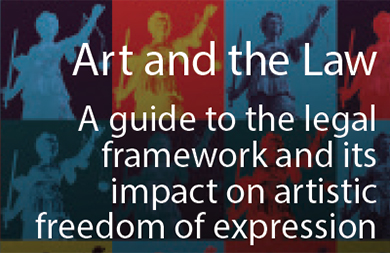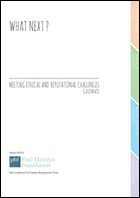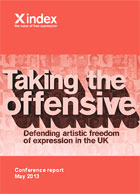By Ceciel Brouwer, 16 February 2016
Ceciel Brouwer is a young academic doing a PhD at the School of Museum Studies in Leicester
In the United States, Australia and Britain a handful of art museums and galleries have come under scrutiny for displaying photographs of children.
Work by photographers such as Nan Goldin, Bill Henson and Sally Mann depicting children expressing a bodily awareness have provoked a reoccurring debate cast in two competing concerns. Voices generally sympathetic to the arts community defend the fundamental right of freedom of artistic expression and emphasise that children are able to give consent. Those calling for institutions to censor art accuse artists of perpetuating the sexualisation of children and ‘playing into the hands’ of paedophiles.
A more critical dialogue on the ethics of exhibiting photographs of young people’s bodies has been hard to find in these debates. The issues are bound up in the display of their image are addressed only during crises of controversy and too often presented as mutually exclusive, while voices of now-adult models remain profoundly absent.
Among the handful of models that have voiced their opinions in media, Sally Mann’s daughter spoke of her experiences as “teaching her the power of art” and inspiring her own career as an artist. Despite the media’s efforts, the now adult models of Bill Henson reflect on their collaboration with the artist as “empowering“. It seems that within circumstances that prioritise the needs and interests of the child, young people can experience an active engagement in art that is inspiring.
Yet not every parent or artist prioritises the best interests of the child when encouraging them to model, making this a particularly difficult ethical territory for museums to negotiate. An inherent power imbalance between parents and/or artists and young people allows some to pursue self-goals over the well-being of the child.
Adolescence is a time in which young people develop their identity, sexuality and thinking in adult-like ways, *while still remaining vulnerable and sensitive to expectations of adults* but also during which they have particular vulnerabilities and remain sensitive to expectations and coercion of adults. A young person might not see the implications of posing in certain ways as problematic until growing into adulthood. *I’d suggest making a new graph here*Consent is fluid and changeable because a person’s feelings may change according to the embodied experiences of adolescence. The meanings a photograph might evoke in other viewers might not become evident until later in life. In addition, photographs are mutable and can be read in very different ways that are temporally and culturally contingent.
In 2010, Vanity Fair published an article that exposed the emotional damage caused by Pop Art pioneer Larry Rivers on his two daughters by filming them naked during their early teens. Rivers made tapes of Emma and her older sister Gwynne on different occasions during the late 70s, “sometimes just with their breasts exposed, sometimes naked, as their father asked them questions about their bodies and budding sexuality“. Although film is inherently different from photography, it shares similarities in this context in that it is expected to show a supposed reality, the true image of a person. One of his daughters later said the film, Growing, contributed to the eating disorder and mental health problems she experienced during her adolescence and adulthood. Despite requests to have the tape destroyed, the archive’s keepers of The Larry Rivers Foundation have decided to keep the film behind closed doors in his daughter’s lifetime, but insist the collection should be kept for the sake of art.
Emma’s account embodies the idea that there is something predatory about the act of taking a photograph, as Susan Sontag asserted in On Photography. Photographs can blur the boundaries between reality and fiction and assert control over their subject, by turning a person into an object that can be possessed. River’s daughter is one of few who has attempted to gain back control over her image and ultimately failed to do so. Although the embargo on the video is partial, it does not grant her control.
Consent is negotiated and defined at the site of construction of the artwork by the relationships between the artist, parents and the autonomy of the child, but cultural institutions play a role by collecting, giving access to, exhibiting and publicising images. A museum grants the image a status inside the realm of art, but also brings work such as Larry River’s from the private into the public sphere. Outside the contemplated context of a gallery or archive, there is little space to negotiate the terms at which a photograph is used. Without any right of ownership of images of themselves, can a young person truly give lifelong informed consent for their image to be used?
No research exists that can enrich this discussion and more significantly bring to light how young people and adults reflect on their experiences. Moreover, a more open and interdisciplinary dialogue between lawyers, children rights advocates, medical ethicists, police, artists and museums is needed to equip institutions with the knowledge to encourage more informed and transparent decision-making and at the same time safeguard themselves against both censorship and self-censorship. A helpful way forward might take the shape of a more dynamic museum ethics discourse that appreciates the complexities of the context in which photographs are made and is rooted in an ethic of care towards the child on display.
Ceciel Brouwer is a young academic doing a PhD at the School of Museum Studies in Leicester. Her research explores how museums negotiate the ethical issues involved in collecting, interpreting and displaying photographs of children that express a bodily awareness. She became interested in ethics, consent and representations of young people when reflecting on the impact of her own experiences as a child participant in medical research and treatment. Her research is funded by the AHRC and Midlands3Cities.




